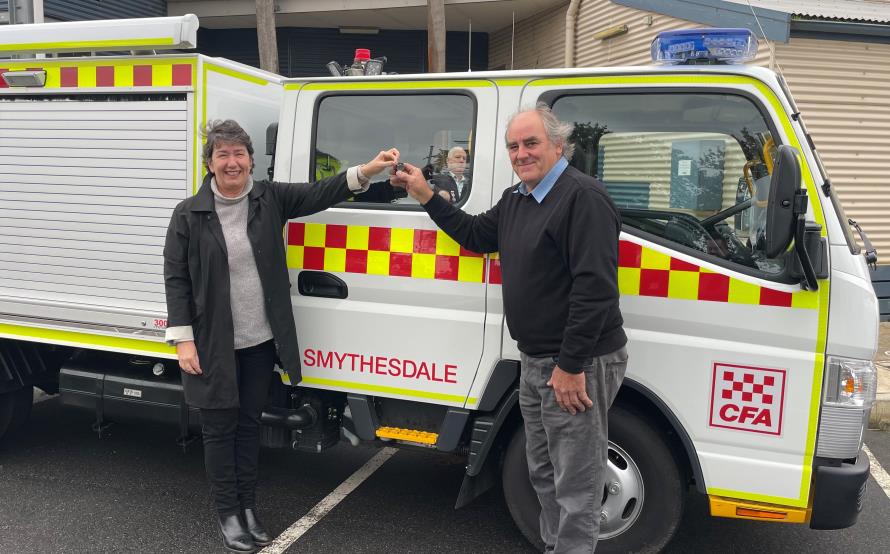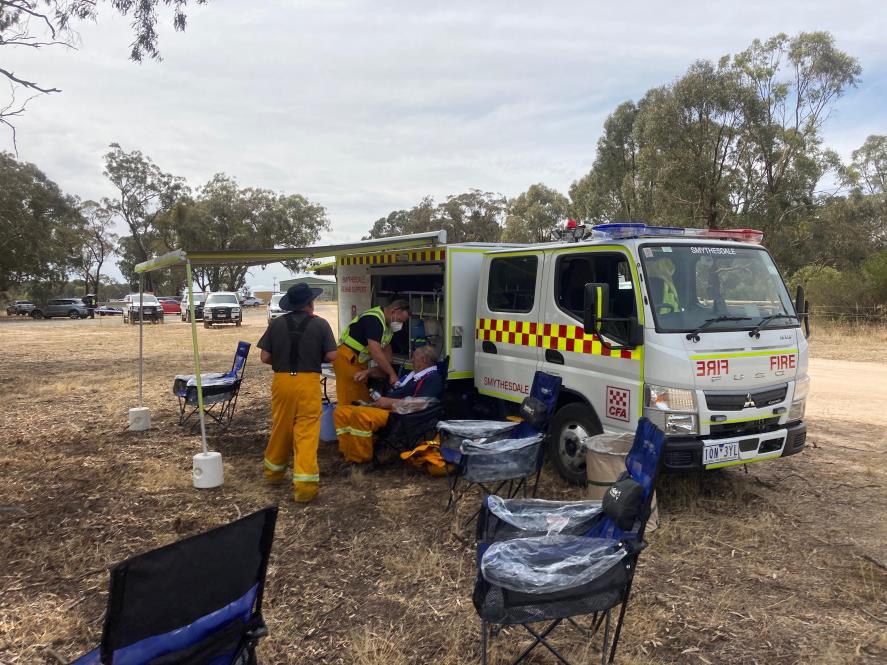 Michaela Settle MP with Smythesdale Captain Jeff Carey
Michaela Settle MP with Smythesdale Captain Jeff Carey
A new rehabilitation vehicle has officially been handed to Smythesdale Fire Brigade at an event on the weekend. The brigade was delighted to have the truck officially handed over by Michaela Settle MP following several delays due to COVID-19.
The $144,300 vehicle supports firefighter and emergency services personnel health at incidents. It was funded through the 2018-19 round of the Victorian Government’s Volunteer Emergency Services Equipment Program, supplemented by a brigade contribution of $4,300.
As one of only 22 brigades across the state to provide specialised response of rehabilitation and health monitoring, the addition of this unit is welcomed by not only Smythesdale Fire Brigade, but all brigades in CFA’s West Region.
From Bacchus Marsh to the South Australian border, the appliance covers a broad response area.
Since becoming operational, it has been used 46 times to support firefighters and agency partners, including Victoria Police, during emergency response incidents.
Greg Parker, First Lieutenant of Smythesdale Fire Brigade, is well-versed in the appliance's features and benefits.
“Prior to receiving this purpose-built appliance, the brigade repurposed a trailer to be used as a rehabilitation support trailer,” Greg said.
“The new appliance not only provides rehabilitation and health monitoring for firefighters at staging areas, but it is also well equipped for use on the fireground.”
Greg, who is a professional nurse, said the brigade has more than 20 qualified rehabilitation operators in their Rehabilitation and Health Monitoring team, including five health professionals.
“There are 22 teams like ours across the state. While the health professionals in our team are nurses, there are also paramedics and doctors who volunteer with their local brigades, providing basic health monitoring which includes examining vital indicators such as temperature, blood oxygen levels and blood pressure checks.”
Greg strongly encouraged his fellow volunteers to take advantage of the expertise of the Rehabilitation and Health Monitoring teams when the need arises.
Rick Owen, Assistant Chief Fire Officer for Specialist Response echoed Greg’s sentiments.
“Rehabilitation units have been shown to significantly reduce the incidence of heat-related illness,” ACFO Owen said.
“They allow emergency service personnel to rest and restore their hydration and core body temperature to levels that are safe to continue participating in emergency response.
“Rehabilitation and Health Monitoring teams have also been trained to assess members for smoke exposure and have specialist equipment to conduct these assessments.
 The rehab unit in action at the Great Western Racecourse fire in Jan 2022
The rehab unit in action at the Great Western Racecourse fire in Jan 2022-
-
-
-